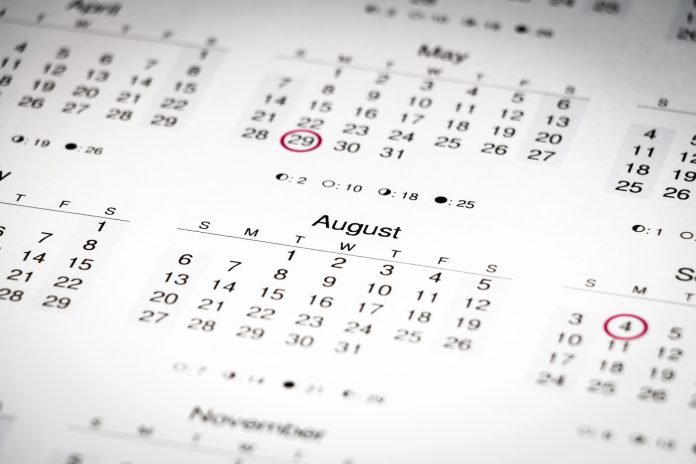- Student loan borrowers are seeing their key dates move, depending on their repayment plan or loan situation.
- Borrowers on the SAVE plan are reporting their forbearance extended to September 2026.
- Existing IDR borrowers are seeing their recertification dates move, while others are finally seeing plan applications processing.
Student loan borrowers are confused with all the different repayment plans, dates, and changes that could be impacting them. The tough part is, what impacts one borrower could be very different than what’s impacting another borrower.
Here are the main student loan borrower groups right now that all have different concerns:
- Borrowers in the SAVE Forbearance (roughly 8 million borrowers)
- Borrowers currently enrolled in an income-driven repayment plan (IDR)
- Borrowers wanting to enroll in an IDR Plan (such as IBR, PAYE, or ICR)
- Borrowers enrolled in a standard repayment plan (10-year standard, extended, graduated)
- New graduates, who are entering their 6 month grace period, and may have to make decisions this fall
Each of these student loan borrowers may have different dates and important deadlines, so let’s break down what each group needs to know right now.
Related: Student Loan Statistics In 2025

Source: The College Investor analysis of Department of Education Data
What’s Happening With SAVE
Status: Forbearance (with borrowers reporting dates of forbearance as far out as September 2026)
Borrowers in the SAVE student loan repayment plan are in forbearance pending the outcome of the ongoing litigation. Nobody knows when this will be resolved. More importantly, even when the outcome of the court case is decided, payments will still not resume right away.
Instead, the Department of Education will have to take the final ruling, and then make new regulations. The regulations will have to figure out where borrowers on the SAVE plan will go, or what will happen to them. They cannot stay in limbo forever.
So, what this means is that even when the court case is over, there will still be months of forbearance before payments officially resume.
With that said, we’ve had multiple borrowers report dates of forbearance until September 2026. This could be the “real” anticipated payment date. Previously, loan servicers were moving forbearance in 3 month increments, but that gets difficult to maintain. By simply picking a far out date, it allows the Department and loan servicers time to breathe and plan.
Side Note For PSLF Borrowers In SAVE Forbearance: The time in the SAVE forbearance does not directly count for PSLF. However, you can use the PSLF buyback program to buy this time back. The administration recently confirmed this in a court filing.
What About IDR Plan Borrowers (IBR, PAYE, ICR)
There are two groups of IDR plan borrowers: those already in an existing IDR plan, and those that have applied for an IDR plan and are waiting. We have some answers for both.
Existing IDR Plan Borrowers
Status: In-Repayment For Most, Processing Forbearance For Few
For borrowers already in an IDR plan like IBR, PAYE, and ICR, payments have resumed and should be made for most borrowers.
There is a small exception for borrowers who had to recertify their income, and sent in their applications between November 2024 and February 2025. These borrowers are going to be in a processing forbearance until the loan servicers clear the backlog. This is expected to happen between now and the end of June 2025.
A recent court case confirmed that all loan servicers should have processing resumed by May 10, 2025, and it will likely take about 6-8 weeks to clear the backlog.
Side Note On PSLF: For borrowers in repayment, PSLF is eligible like normal. For borrowers in a processing forbearance, the 60 day processing forbearance directly counts for PSLF. The administrative forbearance beyond the 60 days does NOT count directly for PSLF. You’d have to use the PSLF buyback program to buy back those months.
New IDR Plan Borrowers Who Recently Applied
Status: In Forbearance
For borrowers who recently applied for a new IDR plan (from February through today), you will be placed into a processing forbearance for up to 60 days. If your application is still not processed, you’ll move to a general forbearance.
Processing of these new applications should be happening by May 10, 2025, but there’s no timeline on clearing the backlog – though we expect it to take no more than 6-8 weeks.
Side Note On PSLF: For borrowers in a processing forbearance, the 60 day processing forbearance directly counts for PSLF. The administrative forbearance beyond the 60 days does NOT count directly for PSLF. You’d have to use the PSLF buyback program to buy back those months.
For Borrowers In An Existing Standard Plan
Status: In Repayment
If you’re on an existing standard repayment plan, such as the standard 10-year, extended, or graduated, you have been in repayment now for almost 18 months.
If you haven’t checked your loans and didn’t realize this, please do so immediately. It’s why many borrowers saw their credit scores drop recently – they didn’t know payments were due.
Side Note For PSLF Borrowers: Only the standard 10-year plan counts for PSLF.
For New College Graduates Thinking Of Repayment Soon
Status: Grade Period Until October or November 2025
If you just graduated college (or will be in May or June), you have a 6 month grace period until your payments begin. Approximately 60 days before your payments begin, you’ll be asked to select a repayment plan and ensure everything is setup with your loan servicer. Then at 30 days out you’ll receive your first statement with a balance due.
If you don’t select a repayment plan, you default into the standard 10-year plan (which is the highest monthly payment).
Your main income-driven repayment plan options (that will provide the lowest monthly payment), will be:
Make sure you use a student loan calculator to understand what your payment would be under each plan.
Side Note For PSLF Borrowers: Make sure you enroll in a PSLF-eligible plan.

Source: The College Investor
Final Thoughts
There are a lot of moving dates and actions that student loan borrowers need to take right now. It’s essential that you understand your loan details (loan type, repayment plan, payment due, due date), and also make sure that your information is updated at your loan servicer.
You don’t want to miss vital communication because you failed to update your email address or mailing address.
Don’t Miss These Other Stories:
Can President Trump Reverse Student Loan Forgiveness?
Education Dept To Change Rules On PSLF and Repayment Plans
How To Qualify For Public Service Loan Forgiveness (Guide)
Create your very own Auto Publish News/Blog Site and Earn Passive Income in Just 4 Easy Steps







